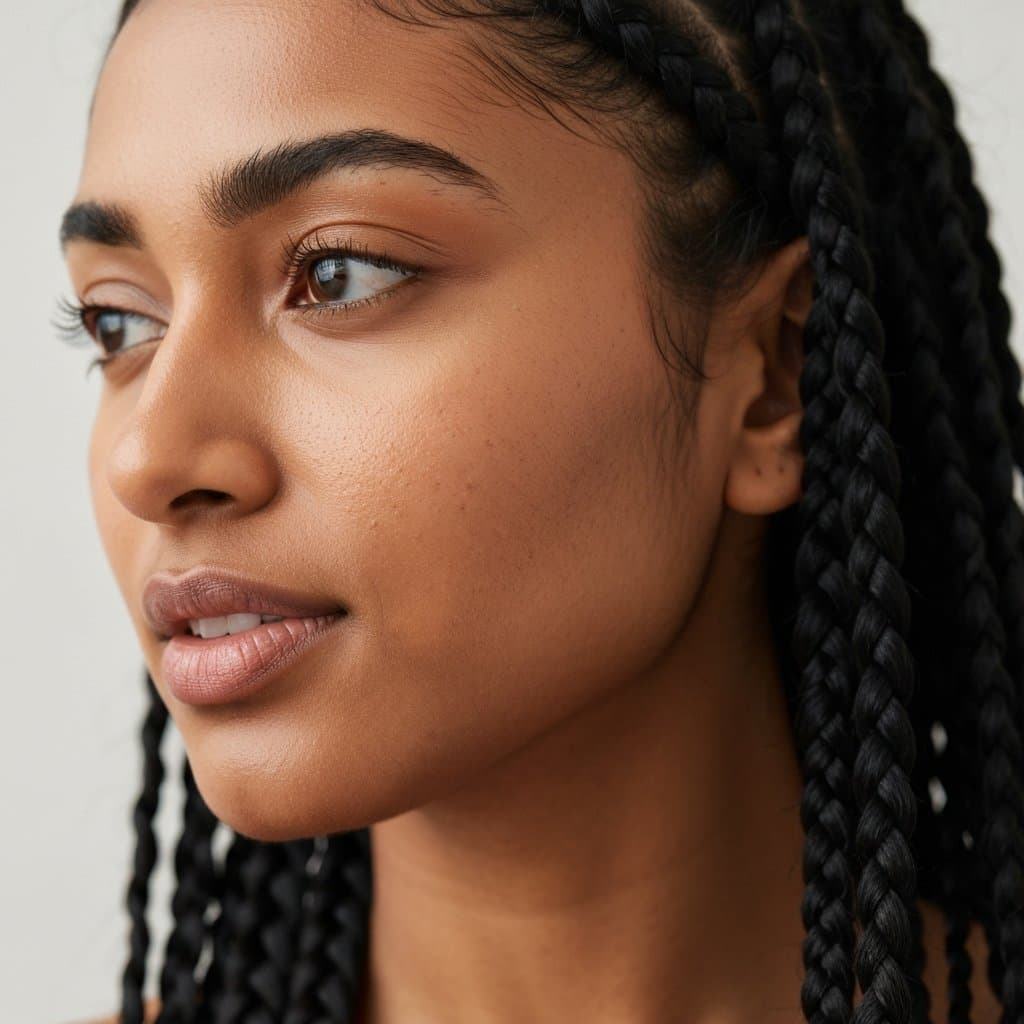Knotless Braids: Your Ultimate Guide to a Healthy & Stylish Protective Style
Discovering the Magic of Knotless Braids
In the ever-evolving world of hair care and styling, the quest for styles that are both beautiful and beneficial for hair health is constant. Enter knotless braids, a revolutionary technique that has taken the protective styling community by storm. Unlike their traditional counterparts, knotless braids offer a seamless, natural-looking finish without the tension and discomfort often associated with braided styles. They represent a significant step forward, prioritizing the long-term health of your scalp and hair while delivering stunning versatility. This comprehensive guide will explore everything you need to know about knotless braids, from their unique installation process to the incredible benefits they offer for your healthy hair journey.
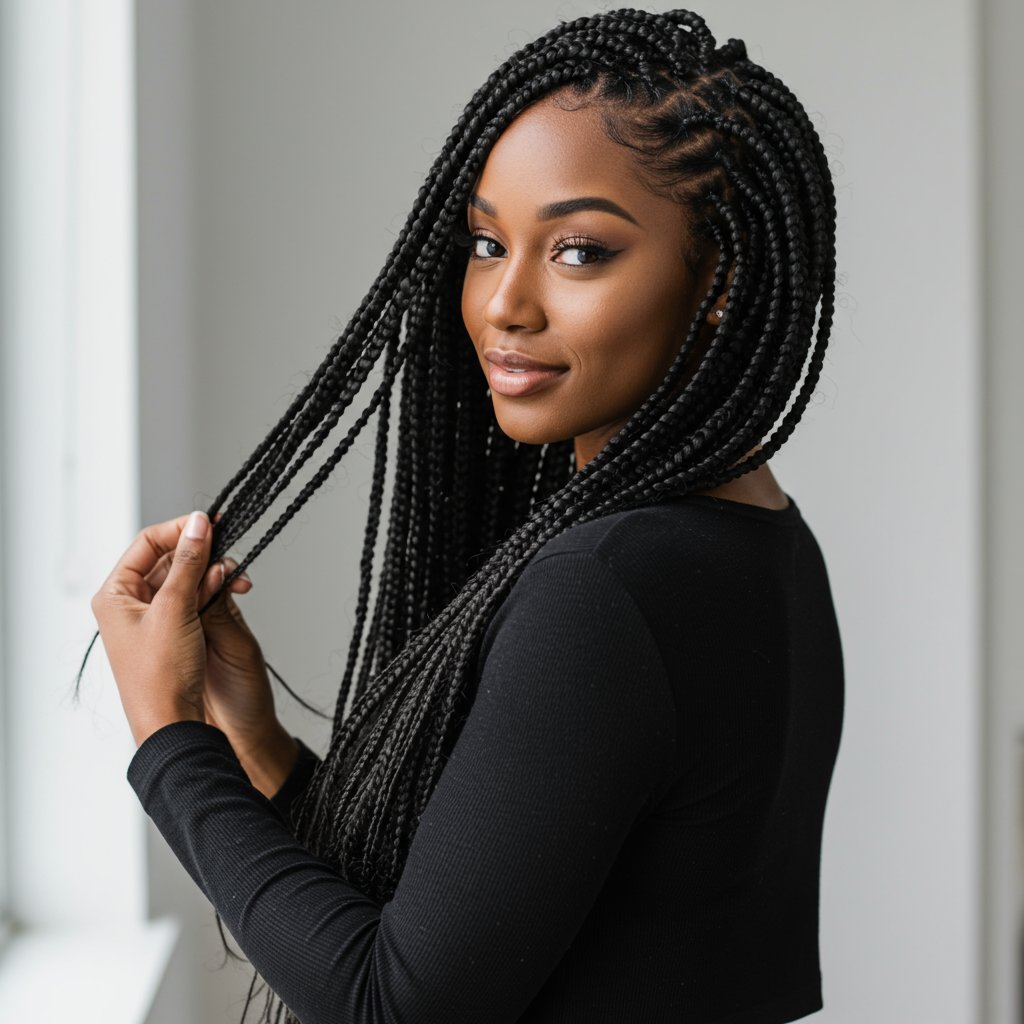
Protective styling is a cornerstone of many natural hair care regimens, designed to shield hair from environmental stressors, reduce manipulation, and retain length. However, not all protective styles are created equal. The key to a truly effective style lies in its ability to protect without causing harm, such as traction alopecia or breakage. Knotless braids masterfully achieve this balance. By starting with your natural hair and gradually feeding in braiding hair, this method eliminates the tight, bulky knot at the base, which is the primary culprit of scalp tension. The result is a lightweight, flexible style that moves and feels like your own hair, laying the perfect foundation for growth and vitality.
Whether you're a seasoned protective style enthusiast or new to the world of braids, this guide will serve as your ultimate resource. We will delve into the core differences between knotless and traditional braids, outline the extensive benefits for your hair's health, help you determine if this style is right for you, and provide expert tips on installation, maintenance, and styling. Prepare to unlock the full potential of your hair with a style that champions both elegance and well-being.
What Exactly Are Knotless Braids? The Technique Redefined
At first glance, knotless braids might look similar to classic box braids, but the true innovation lies in the installation technique. Understanding this difference is key to appreciating why they are considered a superior option for hair health. The method fundamentally changes how the extension hair is integrated, leading to a host of benefits that begin right at the scalp.
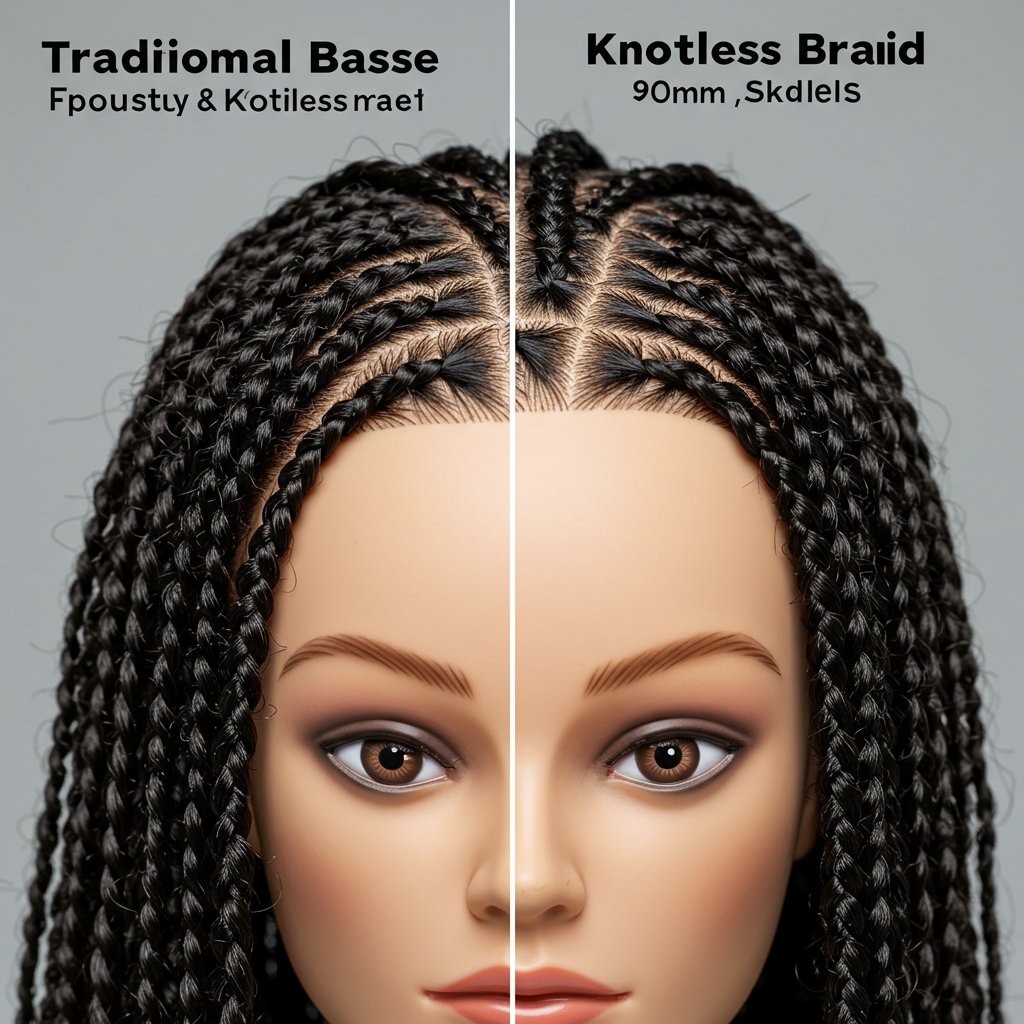
The Revolutionary Feed-In Method
The term "knotless" refers to the absence of the small anchor knot used to secure the extension hair at the root in traditional box braids. Instead, the stylist begins the braid with just your natural hair. As they braid down the section, small pieces of braiding hair are gradually and seamlessly fed into the braid. This "feed-in" technique creates a smooth transition from your natural hair to the extension, resulting in a braid that lays flat against the scalp from the very beginning. This method not only looks more natural but also distributes the weight of the extension hair more evenly along the hair shaft, rather than concentrating it at the root.
Knotless vs. Traditional Box Braids: The Critical Differences
To truly grasp the value of knotless braids, a direct comparison with traditional box braids is essential. The primary distinction is the point of tension. Traditional box braids involve creating a knot with the extension hair around a section of your natural hair at the scalp. This creates immediate tension, which can pull on the hair follicles and lead to discomfort, headaches, and in some cases, traction alopecia over time. The knot also creates a bulky base that can be stiff and less flexible. In stark contrast, knotless braids eliminate this initial point of high tension. The gradual feed-in method ensures the process is pain-free, the braids are incredibly lightweight, and the final look is sleek and flexible from day one. You can style them in a high ponytail or bun immediately after leaving the salon, a feat often too painful to attempt with fresh traditional braids.
The Unparalleled Benefits for a Healthy Hair Journey
The popularity of knotless braids isn't just about aesthetics; it's deeply rooted in their profound benefits for hair and scalp health. By choosing this style, you are making a conscious decision to nurture your hair while it's in a protected state.
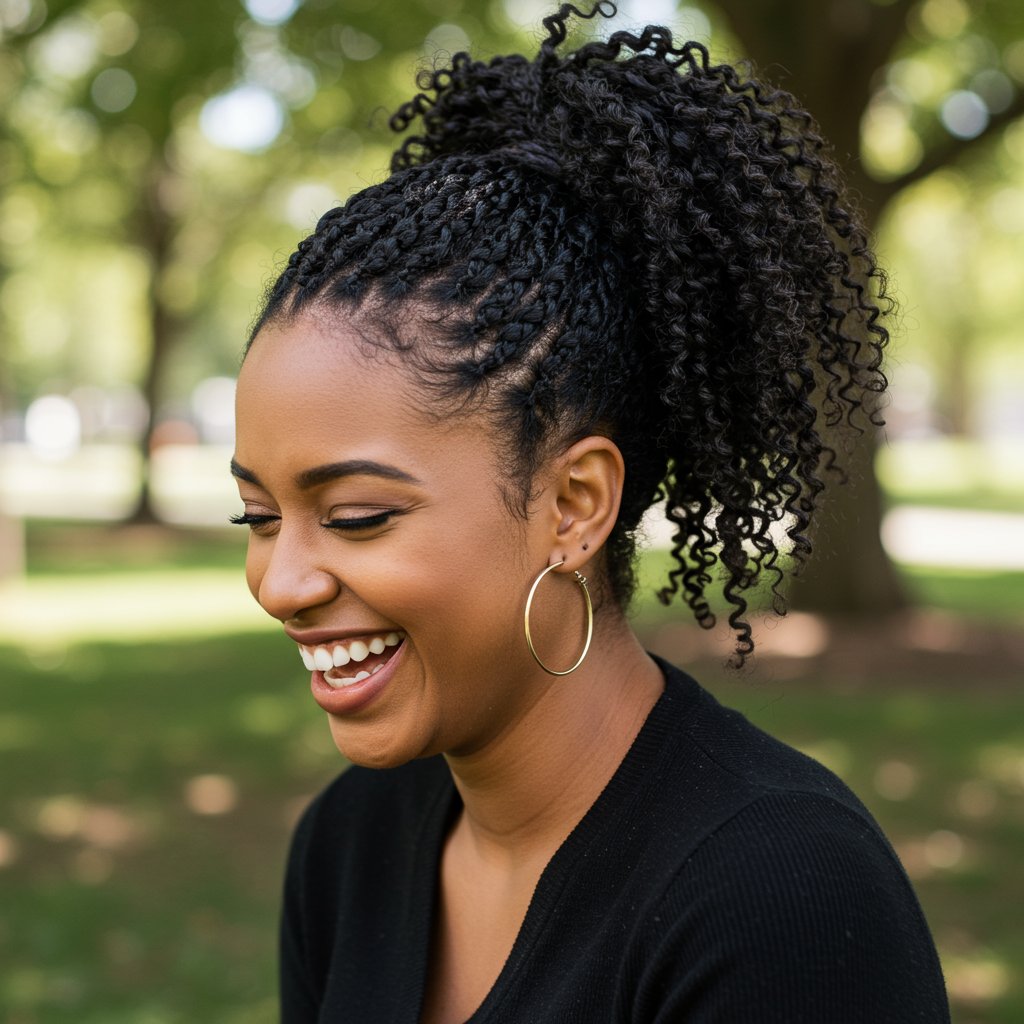
Say Goodbye to Scalp Tension and Breakage
The number one advantage of knotless braids is the significant reduction in scalp tension. Without the tight anchor knot pulling at your roots, the hair follicles are under far less stress. This drastically minimizes the risk of hair breakage at the root, which is a common issue with tightly installed braids. Clients often report a completely pain-free experience during and after installation. This gentle approach makes knotless braids an excellent choice for those with sensitive scalps or fine hair that is more susceptible to damage from tension.
Promoting Natural Hair Growth and Length Retention
A healthy scalp is the foundation for healthy hair growth. By eliminating excessive tension, knotless braids create an optimal environment for your hair to thrive. The style effectively tucks away your natural hair, protecting it from daily manipulation, styling damage, and environmental factors like humidity and friction. This period of low manipulation is crucial for minimizing split ends and breakage, allowing you to retain the length you grow. With proper care and maintenance, knotless braids serve as a true incubator for growth, helping you reach your hair length goals.
Unmatched Versatility and Lightweight Comfort
Beyond the health benefits, knotless braids offer superior comfort and styling versatility. Because they lay flat and are not stiff at the root, they can be styled in various ways immediately after installation without discomfort. High ponytails, elegant updos, and intricate buns are all possible from day one. The braids are also noticeably lighter than their traditional counterparts, as the extension hair is distributed more evenly. This lightweight feel reduces strain on your neck and scalp, making them comfortable to wear for extended periods, even during sleep or workouts.
Are Knotless Braids Right for You? Assessing Your Hair
While knotless braids are a fantastic option for many, it's important to assess your hair's current state and type to ensure the best possible outcome. A consultation with a professional stylist is always recommended, but here are some key factors to consider.
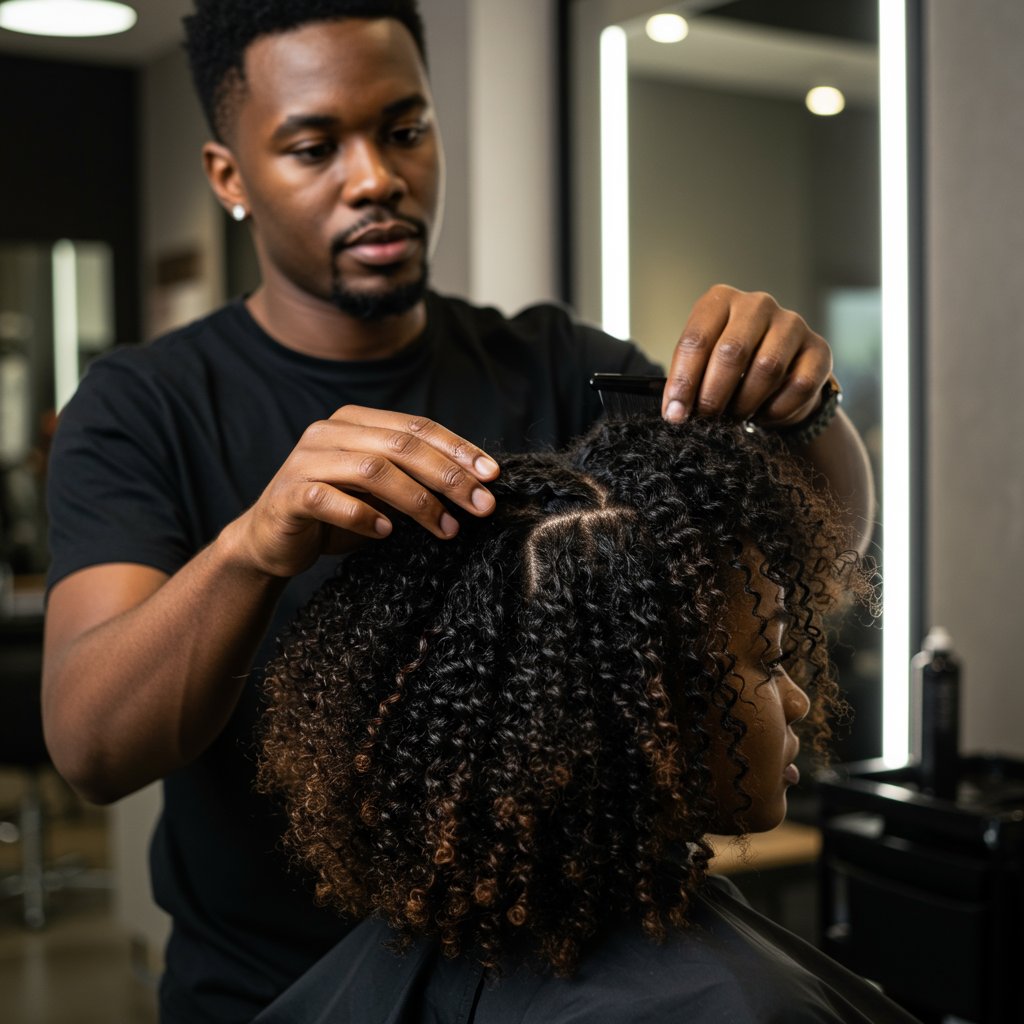
Ideal Hair Types and Textures
Knotless braids are incredibly versatile and work well on a wide range of hair types, from coily and kinky textures (Type 4) to curly and wavy hair (Types 3 and 2). The technique can be adapted to suit different hair densities and textures. For those with finer hair, the knotless method is particularly beneficial as it avoids overwhelming the delicate hair follicles with the weight and tension of a traditional knot. The key is ensuring your natural hair is strong enough to support the extensions, even with the gentler feed-in method.
Considering Hair Length and Density
For a secure and lasting installation, it's generally recommended that your natural hair be at least two to three inches long. This provides enough length for the stylist to establish a solid braid before beginning to feed in the extension hair. If your hair is shorter, it may be more challenging to achieve a seamless blend and secure hold. Regarding density, knotless braids can be customized. A skilled stylist can adjust the size of the sections and the amount of hair fed in to complement your hair's natural density, ensuring the final look is full and balanced without being too heavy.
Pre-Installation Hair Health Check
Before getting any protective style, it's crucial to ensure your hair is in optimal condition. Your hair should be properly cleansed, deep-conditioned, and moisturized to prepare it for the duration of the style. Pay close attention to your edges and nape, as these areas are often the most fragile. If you are experiencing active hair loss, excessive shedding, or any scalp conditions like psoriasis or seborrheic dermatitis, it's best to address these issues with a professional before installing braids. A healthy foundation is non-negotiable for a successful and truly protective style experience.
The Art of Installation: What to Expect at the Salon
Achieving flawless knotless braids requires skill, precision, and patience. Understanding the professional installation process can help you prepare for your appointment and appreciate the artistry involved.
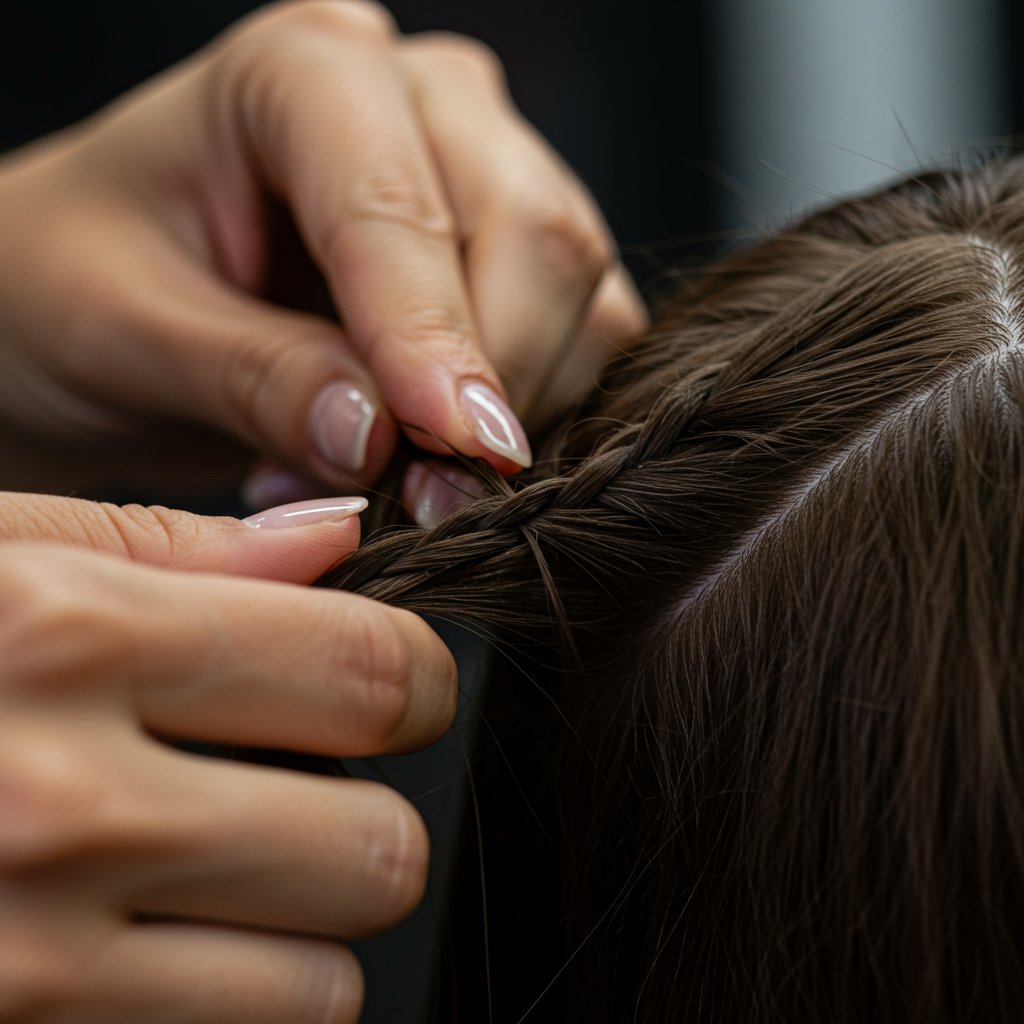
Step 1: The Foundation - Professional Hair Prep
Your appointment will begin with thorough hair preparation. A professional stylist will start by shampooing and clarifying your hair to remove any product buildup, ensuring a clean canvas. This is typically followed by a deep conditioning treatment to infuse the hair with moisture and strength. After conditioning, the hair is gently detangled and blow-dried, often using a heat protectant, to stretch the hair. Stretching the hair makes it easier to section cleanly and allows for a smoother, sleeker braiding process. This meticulous preparation is a critical step that sets the stage for a beautiful and long-lasting style.
Step 2: The Process - Sectioning and Braiding
Once your hair is prepped, the stylist will begin the intricate parting process. They will create clean, precise sections (or 'boxes') according to your desired braid size—small, medium, or large. For each section, they will start braiding with your natural hair only for the first few stitches. Then, using the feed-in method, they will begin adding small, pre-stretched pieces of braiding hair, continuing this process until the desired thickness and length are achieved. An experienced stylist works with consistent tension and rhythm, ensuring each braid is uniform and secure without being tight on the scalp.
Step 3: The Finishing Touches
After all the braids are installed, the final step is to seal the ends. This is typically done by dipping the ends of the braids in hot water, which smooths and seals the synthetic hair to prevent unraveling. The stylist may then apply a light, nourishing mousse or oil sheen to the braids to tame any flyaways and add a healthy luster. This final touch leaves your braids looking polished, neat, and ready to be styled.
Essential Aftercare: Maintaining Your Knotless Braids
Proper maintenance is key to extending the life of your knotless braids and keeping your natural hair healthy underneath. A consistent aftercare routine will prevent product buildup, keep your scalp clean, and ensure your hair remains moisturized.
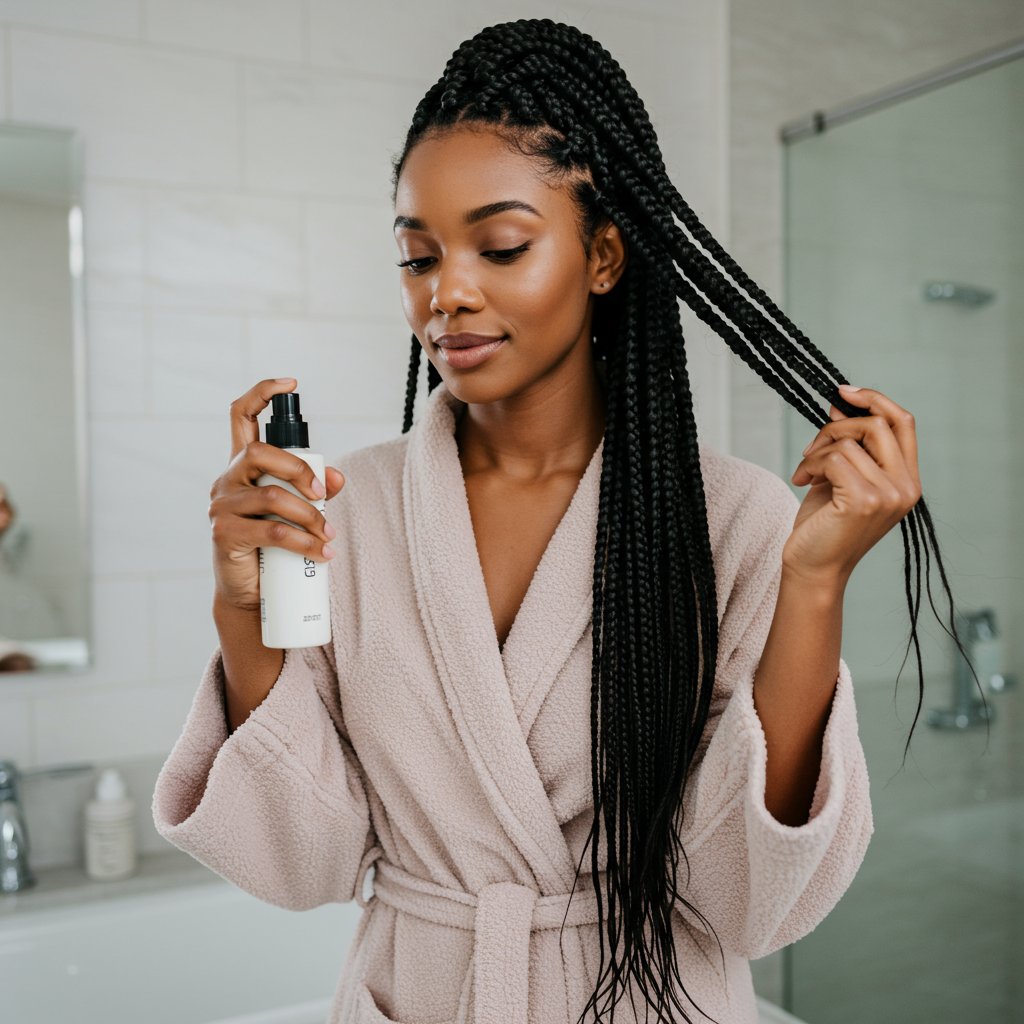
Daily Moisture Routine
Braided hair, especially the natural hair within, still needs moisture. Lightly mist your braids and scalp every few days with a water-based leave-in conditioner or a simple mix of water and natural oils (like jojoba or avocado oil) in a spray bottle. Focus on spraying the length of your braids where your natural hair ends. This prevents your hair from becoming dry and brittle, which can lead to breakage upon takedown. Avoid heavy creams or greases, as they can cause buildup and weigh the hair down.
Cleansing Your Scalp and Braids
Keeping your scalp clean is crucial for promoting hair growth and preventing irritation. Aim to wash your braids every two to three weeks. Dilute a sulfate-free shampoo with water in an applicator bottle and apply it directly to your scalp. Gently massage your scalp with the pads of your fingers (not your nails) to lift dirt and oil. Let the suds run down the length of the braids and gently squeeze them through. Rinse thoroughly to ensure no residue is left behind. Follow up with a light, liquid-based conditioner if needed, and always ensure your braids are completely dry to prevent mildew.
Nighttime Protection
Protecting your braids at night is a non-negotiable step. Tying your braids up and covering them with a large satin or silk bonnet or scarf minimizes friction against your pillowcase. This prevents frizz and flyaways, keeps your edges smooth, and helps your style last longer. For very long braids, you can gather them into a loose, high bun on top of your head before putting on your bonnet. This simple nightly ritual makes a significant difference in the longevity and appearance of your style.
---
Pro Tips for a Flawless Knotless Braid Experience
- Communicate with Your Stylist: Be clear about your desired braid size, length, and parting style. Most importantly, speak up immediately if you feel any pain or excessive tension during the installation.
- Choose Quality Braiding Hair: Opt for pre-stretched, hypoallergenic braiding hair. It saves time during installation and is often gentler on the scalp and fingers.
- Don't Leave Them in Too Long: The recommended maximum wear time for knotless braids is six to eight weeks. Leaving them in longer can lead to matting, tangles, and buildup at the root.
- Edge Care is Crucial: Be gentle with your delicate hairline. Avoid pulling your braids into tight, high styles constantly. Apply a light, non-flaking edge control for styling and nourish your edges with castor oil at night.
- Proper Takedown is Essential: Be patient during the removal process. Use a tool like a rattail comb to gently undo the braids, and apply a detangling product or oil to help work through any knots before you wash your hair.
---
Frequently Asked Questions (FAQ)
1. How long do knotless braids last? With proper care and maintenance, knotless braids can last between six to eight weeks. It's not recommended to keep them in longer to prevent potential damage and matting of your new growth.
2. Do knotless braids hurt? No, one of the primary benefits of knotless braids is that they are virtually painless. Because the braid starts with your own hair and doesn't have a tight knot at the base, there is minimal tension on the scalp. The process should be comfortable.
3. Can you get knotless braids on short hair? Yes, you can, but your hair should ideally be at least 2-3 inches long. This length allows the stylist to get a good grip and create a secure base before feeding in the extension hair. The shorter your hair, the more skill is required for a seamless look.
4. How much do knotless braids typically cost? The cost of knotless braids varies widely based on location, the stylist's experience, braid size (small braids take much longer), and length. Generally, they are more expensive than traditional box braids due to the more intricate and time-consuming installation process.
5. How do I prepare my hair for a knotless braid appointment? Your hair should be freshly washed, deep-conditioned, detangled, and thoroughly stretched (usually via blow-drying). Arriving at your appointment with your hair properly prepped saves time and ensures the best results. Some salons include this prep service in their pricing, so be sure to confirm beforehand.
6. How often should I wash my knotless braids? It is recommended to wash your scalp and braids every 2-3 weeks to remove product buildup, sweat, and environmental debris. This keeps your scalp healthy and your braids looking and smelling fresh.
---
The Verdict: A Top-Tier Choice for Hair Health and Style
Knotless braids have rightfully earned their place as a premier protective style in the natural hair community. They offer a sophisticated and elegant look while fundamentally prioritizing the health and integrity of your hair and scalp. By eliminating the high-tension anchor knot of traditional braids, this technique provides a pain-free, lightweight, and incredibly versatile styling solution. It allows your hair to rest and grow in a truly protected state, minimizing breakage and supporting your long-term length retention goals.
From the meticulous installation process to the simple yet crucial maintenance routine, every aspect of the knotless braid experience is designed with hair wellness in mind. Whether you're aiming for waist-length braids or a chic bob, the knotless method delivers unparalleled comfort and style. If you're seeking a protective style that looks amazing, feels comfortable from day one, and actively contributes to your healthy hair journey, look no further. Consult with a skilled, professional stylist to discuss how knotless braids can be tailored for you and take the next step towards beautiful, healthy, protected hair.

